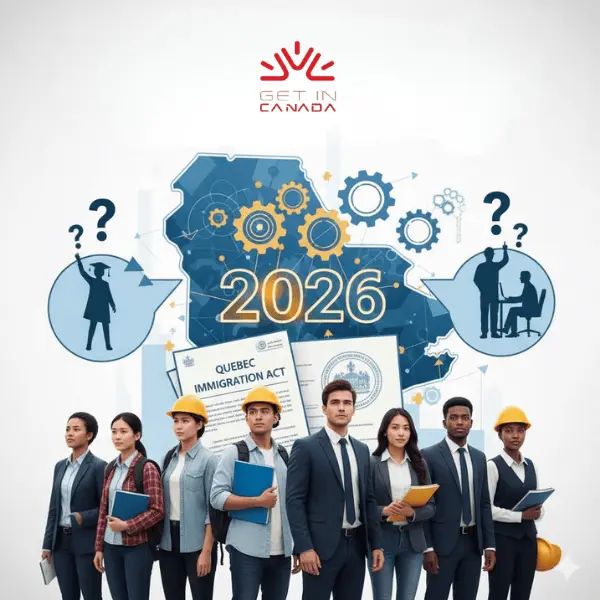Canada reduces the number of immigrants in levels plan for 2025-2027

In a significant policy shift, the Canadian government has announced its 2025-2027 Immigration Levels Plan, marking the first time Canada has set formal targets for both permanent and temporary residents. The plan, introduced by Immigration Minister Marc Miller and Prime Minister Justin Trudeau, addresses concerns about housing, social infrastructure, and economic needs, all while maintaining Canada’s commitment to welcoming newcomers.
Here’s a breakdown of the plan’s key points and what it means for you if you are considering Canada as your future destination for Immigration.
What is the immigration target for Canada 2025?
During a news conference on Parliament Hill, Prime Minister Justin Trudeau, alongside Immigration Minister Marc Miller and Parliamentary Secretary Paul Chiang, announced a plan to reduce federal immigration targets over the next two years. Trudeau highlighted that the number of permanent residents arriving in Canada will be reduced from 500,000 to 395,000 in 2025 and 500,000 to 380,000 in 2026, with a target of 365,000 permanent residents in 2027. The Prime Minister also faced questions from reporters regarding reported internal discord within the Liberal party following a recent caucus meeting.
Permanent Resident Targets: What’s Changing?
One of the major focuses of the 2025-2027 plan is transitioning more temporary residents, such as international students and workers already in Canada, into permanent residents. This helps ease demand on social services, as these individuals are already integrated into the workforce and housing system.
Here are some important numbers regarding permanent resident targets:
In 2025, over 40% of permanent resident admissions will come from individuals already in Canada as students and workers.
By 2027, 61.7% of all permanent resident admissions will be from the economic class, targeting critical labour sectors such as healthcare and skilled trades.
Another key objective is to boost Francophone immigration outside of Quebec, contributing to economic prosperity in French-speaking communities. The targets for Francophone immigration are as follows:
- 8.5% of total permanent residents in 2025.
- 9.5% in 2026.
Increasing Francophone immigration is expected to inject new energy into these communities, fostering regional prosperity while addressing Canada’s linguistic diversity.
Find out if you are eligible to get in Canada →
For the first time ever, the Canadian government has introduced targets for temporary residents, including international students and workers. These targets aim to manage population growth and economic needs more effectively, while also reducing the overall number of temporary residents in the country.
Here are the official temporary resident targets for 2025-2027:
- 2025: 673,650 (with a range of 604,900 – 742,400)
- 2026: 516,600 (with a range of 435,250 – 597,950)
- 2027: 543,600 (with a range of 472,900 – 614,250)
Breaking down these targets by category, we see a more granular view of worker and student arrivals:
Workers (Total)
- 2025: 367,750
- 2026: 210,700
- 2027: 237,700
This includes:
- International Mobility Program (IMP) workers:
- 2025: 285,750
- 2026: 128,700
- 2027: 155,700
- Temporary Foreign Worker Program (TFWP) workers:
- 2025: 82,000
- 2026: 82,000
- 2027: 82,000
- 305,900 students are expected each year from 2025 to 2027.
These numbers reflect Canada’s effort to streamline the temporary resident system while still allowing key sectors like education and industry to thrive.
Net Decrease in Temporary Residents
One of the most notable goals of the new immigration levels plan is the reduction of temporary residents over the next two years. Canada’s aim is to decrease the temporary resident population to 5% of the total Canadian population by 2026 (down from the current 6.2%).
The expected changes are:
- 2025: 445,901 fewer temporary residents than the previous year.
- 2026: 445,662 fewer temporary residents than the previous year.
- 2027: A modest increase of 17,439 temporary residents, resuming growth after initial reductions.
This approach intends to stabilize Canada’s population growth while alleviating pressure on housing, social services, and other critical infrastructure.
What’s Unique About the 2025-2027 Immigration Levels Plan?
This immigration plan stands out for several reasons:
- Early Announcement: Typically, Canada’s immigration targets are revealed on November 1st each year, but this time the government made the announcement a week ahead of schedule.
- Temporary Resident Targets: For the first time in Canadian history, temporary resident targets have been introduced, marking a new approach to managing the country’s population and workforce dynamics.
- Balancing Growth: While immigration remains vital for economic prosperity, particularly in industries like healthcare and construction, the plan demonstrates a conscious effort to balance the need for growth with the strain on housing, social infrastructure, and services.
Do you need help with your application? BOOK YOUR CONSULTATION SESSION
What’s Next for Canada?
Looking ahead, the plan is expected to have lasting impacts on Canada’s economy, workforce, and population. By transitioning more temporary residents to permanent status, particularly those already established in housing and employment, Canada hopes to manage population growth without overwhelming critical infrastructure.
As Minister Marc Miller stated, the new plan reflects the evolving needs of the country: “While our economy still requires newcomers, we must adapt our policies to address the pressures our infrastructure faces.”
Canada’s 2025-2027 Immigration Levels Plan is more than a set of targets; it’s a calculated approach to sustainable growth. Whether you’re an international student, a worker, or an employer, understanding these changes will be critical to navigating the future of immigration in Canada.
With the 2025-2027 Immigration Levels Plan, Canada is taking a forward-looking approach to managing its population growth and workforce needs. By emphasizing the transition of temporary residents to permanent status and setting clear targets for both categories, the country aims to balance the needs of its economy with the realities of its infrastructure.











